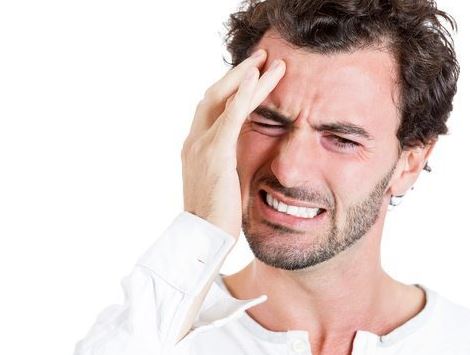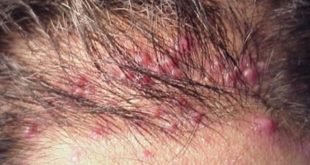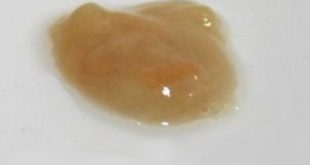An ice pick headache is a severe, sharp pain in the head. It can occur at the back of the head and may be part of the symptoms of a stroke, tumor or even pregnancy in a small percentage of women. What causes ice pick headaches? What are the symptoms and how is it treated?
A headache is a condition that occurs from time to time in the life of a human being. There are so many types of headaches and each one of them has a different bearing and different cause. They have different symptoms and therefore calls for different approaches towards managing them.
What is an ice pick headache?
Contents
The term ice pick is used to depict an intense sudden pain that you think would occur if you are stabbed in the eye or head with an ice pick. Other names used to refer to this headache include ophthalmodynia periodica, first used in the 1960s. They are generally short and extremely intense and can be very terrifying at times.
See also:
They arise from nowhere, can attack any time and can strike anywhere on the head where you literally feel an ice pick that is stuck in your head, then go away before you even figure out what is happening to your system. The pain can also occur behind the ear.
The headache is taken to be a primary headache as there is no deeper underlying cause. In as much as the headache may occur on its own, it is also likely to occur as a result of another head pain disorder. A secondary headache has another cause like a tumor, stroke or another cause like not eating or not taking water.
The normal areas of location of the headache could be the orbit, temporal lobe, parietal region and other accompanying regions. This type of headache occurs in about 40 percent of all the migraneurs, often located in the area of location of the migraine.
The headache is therefore very common if you have some episodes of migraines or other types of headaches like the cluster headaches. There are studies that have shown that women are more affected with this headache as compared to men.
This headache is at times listed as the least among the types of headaches but due to its severity, it is a bother and remains very critical. On the days that they occur, they may occur only once or many times in a day with no regularity.
The moment you start experiencing tears, redness of the eye and nasal stuffiness in conjunction with the stabbing pains in the temporal lobe or the orbital region, it is then likely to be a rare type of headache that is called the SUNCT or simply put Short lasting Unilateral Neuralgiform headache. Most of the attacks of the ice pick headaches occur randomly.
Are ice pick headaches dangerous?
Simply by the fact that the pain is normally sharp and painful in one spot, the headache could be dangerous. This is because it hampers and hinders you from performing your normal day to day tasks of the day. This therefore qualifies the point that this type of headache has a danger potential.
The true source of worry should come in when you experience the headache frequently at regular interval. You have all the reasons therefore to seek the necessary medical attention from a qualified health practitioner.
On the other hand however, since the headache is not linked to any underlying cause, they are therefore not taken as dangerous or any indicative of a serious medical condition in the body. The headaches are more in adults than in children.
Sharp ice pick headache on the back of the head
These pains are sharp, stabbing and occur as a single stab or as a series of stabs that occur mostly in the eye and orbit, temple and the parietal regions of the head. They last for a few seconds and may recur throughout your lifetime.
This headache occurs in or just behind the ear. If migraine is the predisposing factor, then it will take place where the migraine occurs. It can be very frightening and frustrating if it goes ahead to hamper your hearing.
Causes of ice pick headaches
The reason behind this disease is not clearly known but doctors have it that it is likely brought about by injury or a disease. You may also get it because something went wrong with the way your brain sends signals to your body.
- It has been established that about 25 percent of the ice pick headaches are brought about by migraines. There are however very few medical journals and publications that allude to this as one of the causes of the headache.
- There have been two cases that were reported brain tumor to be one of the causes of the occurrence of ice pick headache. The tumor is called meningioma and the pains can be resolved after the successful removal of the tumor. (Mascellino 2001)
Can stress cause ice pick headaches?
The truth of the matter is this headache can be brought about by stress. Stress moments are noted by episodes of tension in the brain muscles and this could give birth to ice pick headaches. During stress, there is also secretion of cortisol or the stress hormone that could put more exertion on the brain muscles and hence stress.
It normally feels like there is a vice that is squeezing your head. It is caused by the contraction of the muscles of the cover the skull. The pain then spreads over one ear to the other, around the front of your head. Lack of sleep is mostly the case and reason why your body is under the stress.
You are likely to have numbness or altered sensation in the area just above the eye. This is however not always the case as you are likely to have a different experience.
Symptoms
Research shows that this headache is more of a nuisance than a real problem. There are various things that this headache is noted for and they include:
- They are very brief as they last for a second or two then disappear.
- They are instantaneous in that they just occur out of the blues. They don’t give warning or an indicator of their coming.
- They are not associated with any form of nausea, intolerance to light, vomiting or watering of the eyes
- They can also occur once every few days or dozens of times every day.
The pain brought about by this headache is said to occur above the eye, though a recent study pointed out that the pain is located out-with the classic area 70 percent of the time and can even be felt in the neck (Wang et al Cephalalgia 2007).
Treatment of ice pick headaches
The treatment of this type of headache can be very cumbersome. This is because the headache has a very short duration as it only last seconds. Before the treatment, the doctor should have some prior shorthand information on the predisposing factors to the headache. This can help in the management.
Most of the headaches except the serious cases like migraines can be treated using over the counter drugs like ibuprofen. Just because of how abrupt and brief the headache is, you will need to employ preventive treatment instead of the typical medications. The medicines are discussed below:
Indocin
Simply put indomethacin is a non-steroidal anti-inflammatory drug. Patients are advised to take 12.5mg of the medication about 2 to three times a day, although it is only effective for about 65 percent of the patients who try it. The dose should be increased between 25 and 50 mg a day for there to be a drop in the severity of the ice pick headache.
In addition, because of its low effect rate, Indocin usage is however not ideal, especially over long periods of time. It has nasty side effects like stroke, heart attack, bleeding from the stomach and intestines and impaired vision.
Apart from that, indomethacin has been shown to cause digestive problems and discomfort. Your doctor should therefore discuss ways on how to reduce the gastrointestinal upsets from the drug. Other NSAIDS can also be useful.
Melatonin
This is a hormone that regulates sleep and could be used as an insomnia medication. It is also ideal treatment for this kind of condition. You can obtain the medication without any prescription from the shop that is near you. It however has some side effects that include dizziness and fatigue.
Take life simple
There is no clear evidence whether this approach works but if you suffer from this condition you are advised to take regular sleep schedule, light to moderate exercise, stress relieving activities like meditation and healthy eating habits.
Gabapentin
Consumption of about 1800mg per day of this drug could be of great use. It is given hand in hand or in conjunction with indomethacin for 5 to 7 days at a dose of 25mg three times a day and start the gabapentin at 300mg daily, increasing by 300mg per week till an effective dose or a maximum of 600mg is reached. The main problem with it is that it could make you sleepy.
On a general scale however, migraine medications could also be prescribed. They work in a similar manner to help as the two types of headaches are related. You therefore don’t to worry when they occur. When it becomes a hindrance to your daily activities, then seek professional intervention. Other drugs that are seen to help anti-depressant drugs and anti-epileptic drugs.
Home remedies for ice pick headaches
Peppermint oil is one of the best remedies. It can simply be applied to bring about the desired effects. The procedure below is essential:
- Apply this oil to your hairline;
- It creates a cooling sensation that relaxes the muscles in your head and neck.
Similarly, ginger tea is yet another very important herb for this purpose.
Procedure
- Crush up an inch of ginger root and add it to boiling water.
- This homemade tea reduces inflammation in about the same amount of time as it would take an aspirin to work.
The other very important remedy is capsaicin cream. In the cream, the active ingredient is cayenne pepper.
Procedure
- Apply a small amount to the inside of your nostril that’s on the side of your head where you are experiencing pain.
- The cream works to block nerve pain signals.
Other than that, water, which is a locally available resource is very helpful. Drinking a glass of water can rescue you from the agony. Sometime headaches (and muscle aches) are caused by simple dehydration. Always ensure that you drink plenty of non-caffeinated beverages over the course of the day.
On the other hand, avoid or limit the consumption of sodas as sweeteners are a headache trigger for most people. Instead, consume diluted fruit juice, plain water or water with a splash of lemon or lime, water kefir, switchel, coconut water or whatever you like. Just make sure you don’t dry out.
The other home remedy is to apply ice or avoid heat. Ice constricts blood vessels, which may reduce pain and inflammation. Try applying an icepack on your forehead or at the base of the skull at the first sign of a headache. Alternatively, if you can tell that your muscles are very tense, you may want to place a hot pack or heating pad on tight neck muscles, or soak in a warm bath.
To add on that, you could take a nap. To that, find a cool, dark, quiet room and take a 10-15 minute nap. This tends to work better for migraines and tension headaches, but can make cluster headaches (those with stabbing pain around the eyes) worse. Note that too much sleep or a significant disruption in your sleep schedule can trigger headaches.
Similarly, you can massage the pain away at home. Rubbing the temples in a circular motion or firmly massaging the neck and shoulders to relieve tension are two tried and true massage options for headaches.
The other cause of this types of headaches is low magnesium levels. You should therefore increase the intake of magnesium. Low levels of magnesium in the blood are commonly associated with headaches, especially in women, particularly migraines and headaches related to the menstrual cycle. 400 – 700 mg of magnesium daily is considered safe.
Excess magnesium taken orally on the other hand can put a strain on the kidneys, so make sure you do not overdose. Foods high in magnesium include molasses, nuts, spinach, wheat germ, pumpkin seeds, sesame seeds, seafood, cheese, baked potatoes, broccoli and bananas. You can also add Epsom salts to your bath, or use a spray on magnesium oil.
You could also take a sip of apple cider vinegar. Apple cider vinegar comes to the rescue again as the most popular recommended headache treatment according to Earth Clinic. Contributors recommend anywhere from a spoonful to a quarter cup of ACV straight up, mixed with water or juice, or however you can get it in.
You could also try some herbal tea. The teas can relax and soothe. Some herbs commonly recommended for headaches and migraines are feverfew (migraines), passionflower, gingko biloba, cayenne, willow and chamomile. Mountain Rose Herbs has many organic herbal teas and tea blends.
How to prevent ice pick headaches.
Usually, prevention of the headache is better and more effective that curing or treatment of the headache in the long run. You should hence explore a prevention option before eventually curing it. Drugs are not always the best solution to run to.
The first and the most important thing to do is to reduce the likelihoods of you getting exposed or subjected to stress. The environment has so many stressors but you should try as much as you can to avoid or limit your exposure to them.
The other thing you could do is to take a walk. This is a great option for tension headaches, as physical activity helps to relieve muscle tension. Your muscles tend to want to stay doing whatever they are doing, and this can lead to them knotting up and shutting you down.


